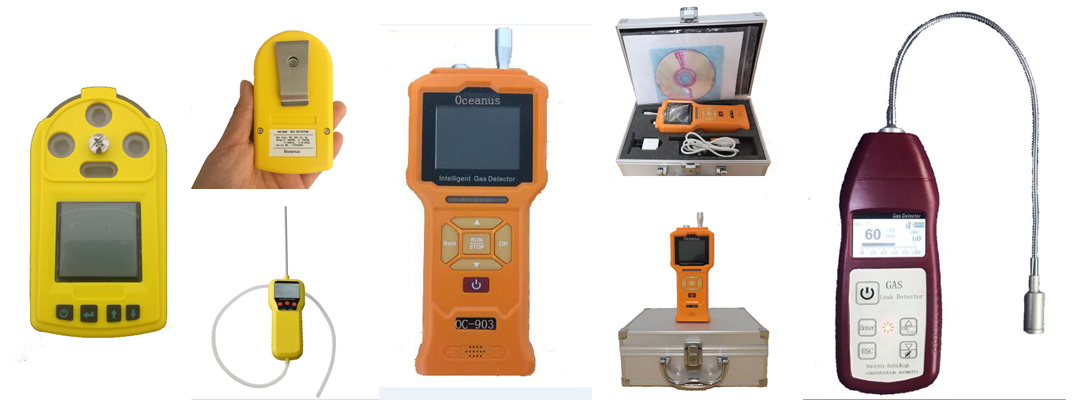History of Gas Leakage Detection
Gas leak detection methods became a concern after the effects of harmful gases on human health were discovered. Before modern electronic sensors, early detection methods relied on less precise detectors. Through the 19th and early 20th centuries, coal miners would bring canaries down to the tunnels with them as an early detection system against life-threatening gases such as carbon dioxide, carbon monoxide and methane. The canary, normally a very songful bird, would stop singing and eventually die if not removed from these gases, signaling the miners to exit the mine quickly.
Gas leak detection is the process of identifying potentially hazardous gas leaks by sensors. These sensors usually employ an audible alarm to alert people when a dangerous gas has been detected. Exposure to toxic gases can also occur in operations such as painting, fumigation, fuel filling, construction, excavation of contaminated soils, landfill operations, entering confined spaces, etc. Common sensors include combustible gas sensors, photoionization detectors, infrared point sensors, ultrasonic sensors, electrochemical gas sensors, and semiconductor sensors. More recently, infrared imaging sensors have come into use. All of these sensors are used for a wide range of applications and can be found in industrial plants, refineries, pharmaceutical manufacturing, fumigation facilities, paper pulp mills, aircraft and shipbuilding facilities, hazmat operations, waste-water treatment facilities, vehicles, indoor air quality testing and homes.
The first gas detector in the industrial age was the flame safety lamp (or Davy lamp) was invented by Sir Humphry Davy (of England) in 1815 to detect the presence of methane (firedamp) in underground coal mines. The flame safety lamp consisted of an oil flame adjusted to specific height in fresh air. To prevent ignition with the lamps flame was contained within a glass sleeve with a mesh flame arrestor. The flames height varied depending on the presence of methane (higher) or the lack of oxygen (lower). To this day, in certain parts of the world flame safety lamps are still in service.
The modern era of gas detection started in 1926-1927 with the development of the catalytic combustion (LEL) sensor by Dr.Oliver Johnson. Dr Johnson was an employee of Standard Oil Company in California (now Chevron), he begun research and development on a method to detect combustible mixtures in air to help prevent explosions in fuel storage tanks. A demonstration model was developed in 1926 and denoted as the Model A. The first practical "electric vapor indicator" meter begun production in 1927 with the release of the Model B.
The worlds first gas detection company, Johnson-Williams Instruments (or J-W Instruments) was formed in 1928 in Palo Alto, CA by Dr Oliver Johnston and Phil Williams. J-W Instruments is recognized as the first electronics company in Silicon Valley. Over the next 40 years J-W Instruments pioneered many "firsts" in the modern age of gas detection, including making instruments smaller and more portable, development of a portable oxygen detector as well as the first combination instrument that could detect both combustible gases/vapors as well as oxygen.
Before the development of electronic household carbon monoxide detectors in the 1980s and 1990s, carbon monoxide presence was detected with a chemically infused paper that turned brown when exposed to the gas. Since then, many electronic technologies and devices have been developed to detect, monitor, and alert the leak of a wide array of gases.
As the cost and performance of electronic gas sensors improved, they have been incorporated into a wider range of systems. Their use in automobiles was initially for engine emissions control, but now gas sensors may also be used to ensure passenger comfort and safety. Carbon dioxide sensors are being installed into buildings as part of demand-controlled ventilation systems. Sophisticated gas sensor systems are being researched for use in medical diagnostic, monitoring, and treatment systems, well beyond their initial use in operating rooms. Gas monitors and alarms for carbon monoxide and other harmful gases are increasingly available for office and domestic use, and are becoming legally required in some jurisdictions.
Originally, detectors were produced to detect a single gas. Modern units may detect several toxic or combustible gases, or even a combination. Newer gas analyzers can break up the component signals from a complex aroma to identify several gases simultaneously.
Any question, pls contact us: Email: info@china-oceanus.com; Tel: +86-371-60998169
- Pre:We are looking for Members globally! 2019/7/22
- Next:New portable gas detector with inner pump 2016/4/11





